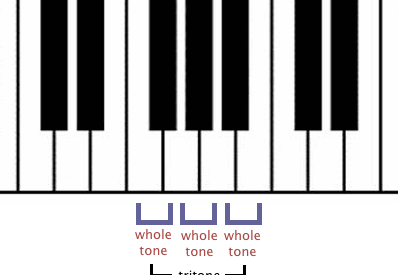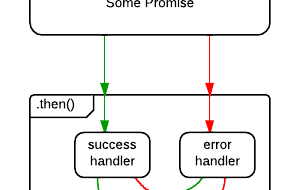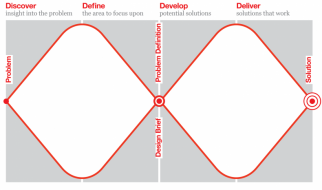Why augmented fourths are not the same as diminished fifths.
The word tritone is frequently used interchangeably with the terms augmented fourth and diminished fifth. Let?s see if we can clear that up.
The intervals of the augmented fourth and diminished fifth indeed sound the same when played out of context on a piano, but they are not the same interval, they are not both the same thing as a tritone, and the tritone is not an inversion of itself.
The word tritone can be broken down to something like ?three tones.? A major second, or whole step, is a tone. In music theory nerd circles, a major third, which is the combination of two whole tones, can be referred to at times as a ditone. So, the word tritone follows this pattern: three whole tones.
Now, is this an augmented fourth, a diminished fifth, or both?
I find it helpful to consider the visual layout of the piano keyboard. There?s no better representation of the arrangement of half steps and whole steps that is the diatonic scale. The two half steps that occur, mi-fa and ti-do, are plainly seen among the white keys. You will notice that the only occurrence of more than two sequential whole steps is between fa and ti, or F and B in C major.
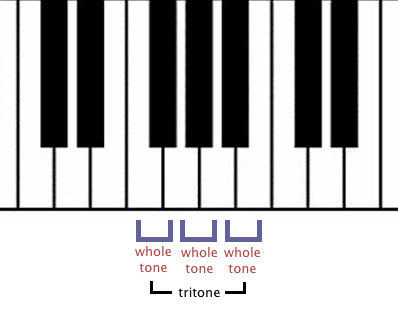
The three whole tones make it kosher to call this a tritone. The four notes from F to B, inclusive, make it an interval of a fourth ? an augmented fourth. In order to be a diminished fifth there would have to be five notes from the lower note to the upper one, inclusive. In C major, our white keys show us that this occurs between B and F.
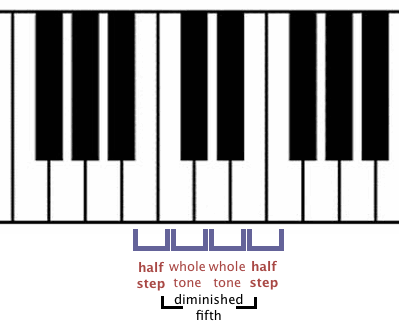
So, we can correctly refer to the augmented fourth as a tritone, but not a diminished fifth. It?s easy to think the two are the same thing, because they sound the same when plonked on a piano with no context, but intervals have no meaning without context.
The presence of these half steps ? mi-fa and ti-do ? is what gives our diatonic system balance and drama, and these two intervals behave differently in light of that. The diminished fifth resolves inward ? ti up to do and fa down to mi, while the tritone, or augmented fourth, resolves outward. In other words, these two intervals are as different from each other as, say, a major third and a minor sixth.
Originally published at www.michaelkaulkin.com on November 16, 2011.
